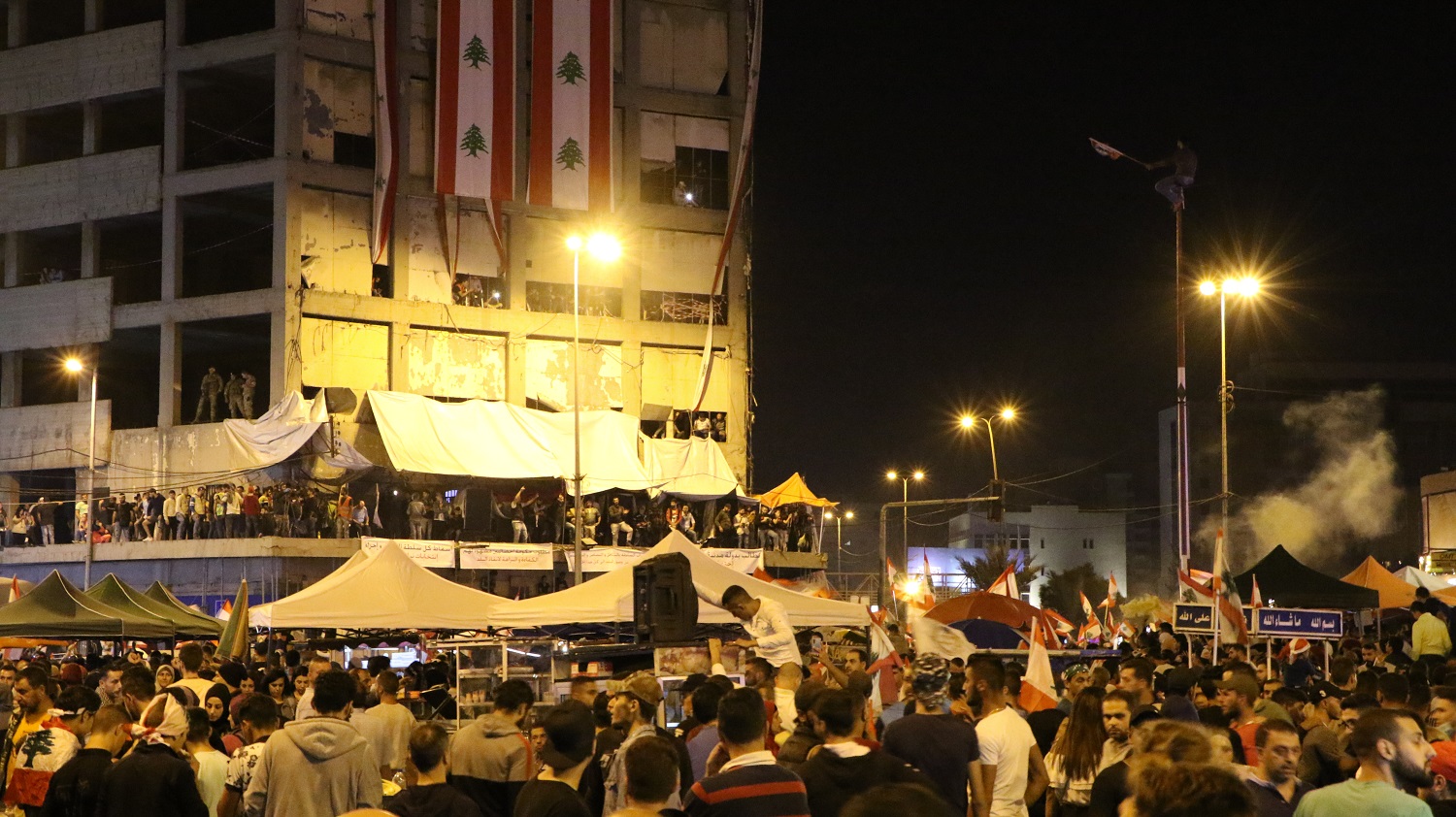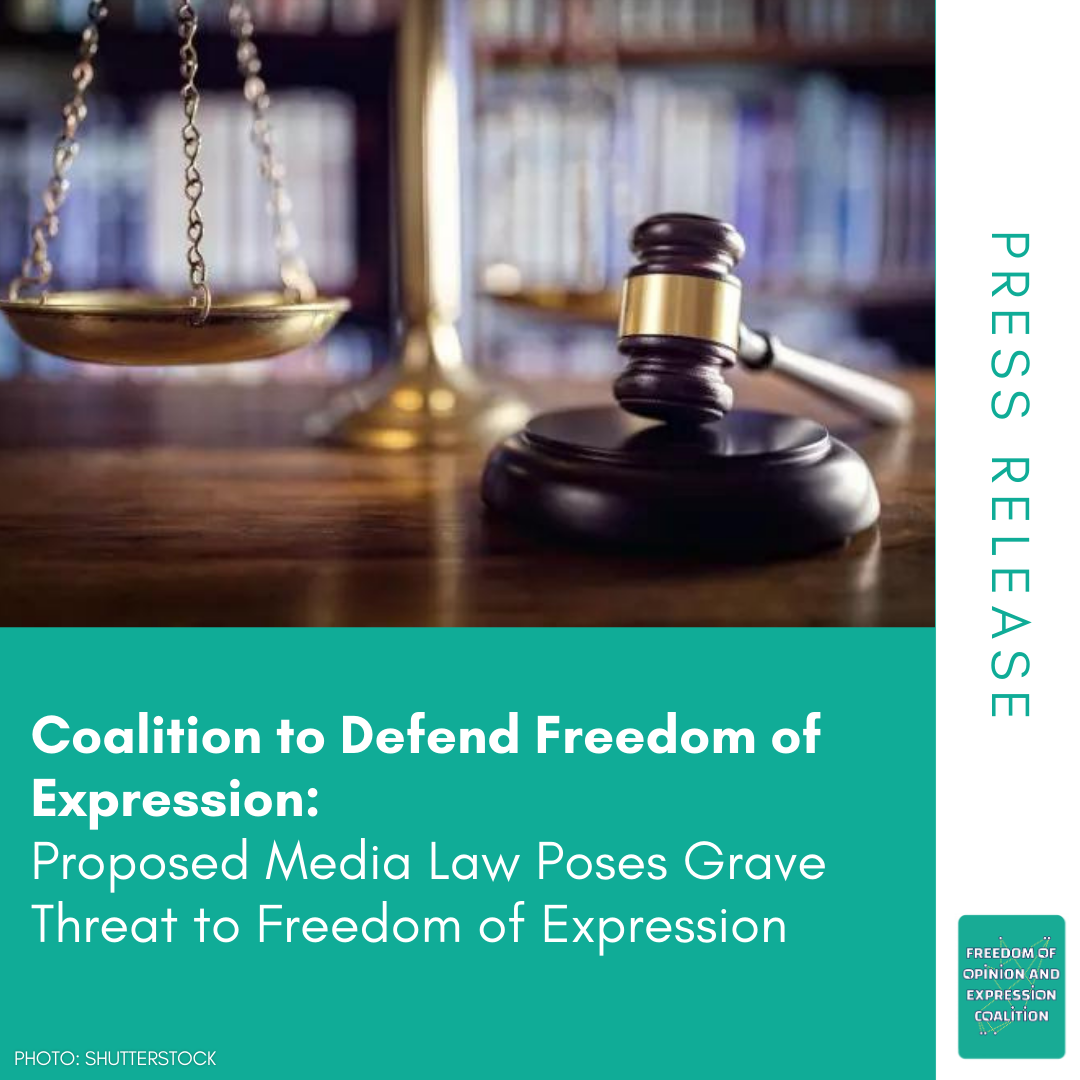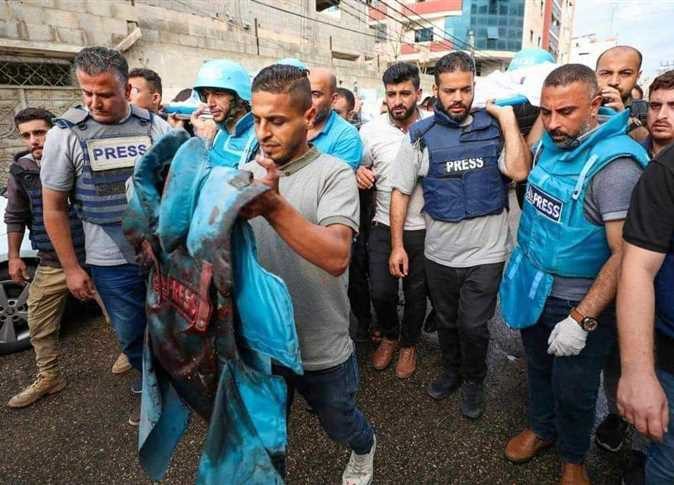Reclaiming Public Space and Its Role in Producing the Revolution

One of the most important gains achieved by the October 17 movement – i.e. the revolution – in Lebanon is the Lebanese citizens’ reclamation of public space in all the regions where the protests spread, transcending the centrality of the capital for the first time in decades. Public spaces have emerged not only as a physical and spatial entity in which the events occur but also as a key political component in the production, continuation, and fueling of the revolution. During the revolution, public space is not limited to the squares, parks, and spaces that are public due to their civic function and location; rather, entire regions have become a public sphere wherein political opinion forms and debates occur. Hence, the conflict between the political sides is reflected by a spatial struggle in the city: Who occupies the squares? Who imposes their authority over the street and movement in it? Who dominates the city’s visual landscape via images, banners, and graffiti?
Public space is defined as the social framework for free communication, without the shackles of censorship, about anything concerning culture and society and any subject of public debate. Since the Enlightenment in the 18th century, public space has been seen as an intellectual regulator that is conducive to the free and rational self-organization of society and to the improvement of the state, which limits the abuse of power.[1]
Public spaces play a fundamental role in strengthening democracy because they regulate and facilitate social interaction and constitute a center for civil society, a space where public opinion forms to counterbalance political power. To underscore this idea, we shall return to the definition of the concept of the “public sphere” in political philosophy: public space is that which is considered a place for political debate and democratic practice and is therefore one of the tools and forms of communication, as well as a place where the personality of the citizen as the basis of all political legitimacy develops .[2] The public sphere is an abstract and political space produced by the direct and indirect verbal exchanges between citizens concerned with public affairs, so the citizen’s voice is what denotes the public realm.[3] Hence, the emergence of public space’s spatial importance became the precondition for the emergence of a deliberative democracy in which every decision is legitimate only if preceded by a public debate.
The massive demonstrations and protests that have been occurring since 2015 and culminated in the October 17 movement remind us of the importance of the virtually absent public spaces in Lebanon, which thrive off the pressing issues that ignite them. The most successful of these spaces are those that emerge automatically and often grow from most activities that are impromptu or organized organically or spontaneously. The best evidence of this is Lebanon’s squares that had been emptied of their essence since the end of the Civil War and that Lebanese citizens’ reclaimed in their movement such that entire regions, with their streets, car parks, and interconnected squares, became an endless public area.
The reclamation of public space took different forms: the spatial (the occupation of squares and roads), the intellectual (the use of slogans and the organization of discussion circles), and the symbolic (the entry into the Grand Theatre after the construction site’s fencing was removed), the artistic (graffiti and music), and the spectacular (the human chain and the registering of the Ring Bridge as a house on Airbnb). This resulted in many social gains, some of which I shall address below.
Activating Public Spaces’ Political and Social Role
Since the war ended, public spaces have been absent from planning policies. These policies have been directed by the high property prices toward intensifying property development and speculation, ignoring the need for public spaces and communal centers in any urban plan. The best example is the policies of the reconstruction period, namely the major land reclamation projects (e.g. in Dbayeh and Normandy) and the privatization of downtown Beirut and physical planning of the surroundings of Martyrs’ Square such that it is encompassed by luxury commercial and residential buildings. This reflects the neoliberal economy, on the one hand, and an attempt to control and manipulate the public sphere to transform it into an artificial consumer area, on the other. Consequently, spaces for people to converge in the city transformed from public ones into private ones consisting of restaurants, commercial centers (the mall), and sea resorts, and since the late 1990s, malls have emerged as a central alternative public space because they contain a multitude of activities within a safe environment, such as cinemas, restaurants, and children’s recreational areas.[4]
The October uprising changed this typical image by reclaiming the historical public squares (such as Martyrs’ Square, Riad al-Solh Square, and Abdul Hamid Karami Square, a.k.a. “Al Nour Square”) and activating their true social role in facilitating people’s convergence, promoting citizenship, and forming public opinion. Hence, discussion circles and public educational sessions on economic, rights, and political issues proliferated, bringing the lecture halls out of the universities and into the street. These discussions helped in clarifying and crystalizing the people’s demands, as well as in defending important communal issues to form an informed public opinion that can effect accountability. In Beirut in particular, the reclamation of the squares revived the stagnant downtown area (Solidere), which was more like a pretty stage set rather than a living city with a multitude of activities and the proliferation of small stalls and hawkers within an organic arrangement of different groups, each taking one corner of the city.
The public sphere produced by the revolution falls into four categories:
-
The public squares and parks available (such as Martyrs’ Square and Gibran Khalil Gibran Garden).
-
The traffic circles (such as Sassine Square and Al Nour Square).
-
The public roads and highways.
-
The abandoned cultural buildings in downtown Beirut, such as the Grand Theatre and the City Centre building, known as “The Egg”, which hosted broad discussion groups.
Breaking the Elite Political Leaders’ [Zuama] Domination Over Discourse and the Urban Landscape
Most of the public spaces have been occupied by sectarian and political conflicts, ideological slogans, and religious symbols, which subjugated the public sphere following the paradigm of “might overcomes right”. Shortly after the war, the urban landscape divided, and regional leaderships and affiliations emerged. This is clearly evident from the images, writings, and banners spread throughout the neighborhoods and main roads, which distinguish one area of influence from another. This urban landscape reflects the political division in Lebanon, the domination of the parties’ discourse over their constituencies, and the struggle over who monopolizes the public sphere. The people’s reclamation of public space broke the hegemony of this discourse and helped people overcome the barrier of fear of expressing opinions that go against the norm, armed with group power and the public nature of the place where the actions occurred. This manifested itself in the removal of party banners and politicians’ images and the rise of only the Lebanese flag in the streets and on buildings. These actions symbolize the development of citizenship and the diversity of opinion, especially in the south, which was long associated in political discourse with one actor. Hence, as a reflection of the conflict over who monopolizes the public sphere, these steps caused the peaceful uprising to be met with violence despite the justice of the demands and the unity of the narratives about economic and social grievances.
From another angle, the blocking of the roads and the closure of Ring Bridge in particular, as well as the repeated attempts to open it by force, especially the savage violence that the protesters suffered in the hours preceding the government’s resignation, are another example of the struggle to monopolize the public sphere: Who owns the street? Who passes, and when? Which demands have more merit – freedom of passage or the freedom to strike and express oneself? Ring Bridge also bears significant symbolism. While it constituted a demarcation line dividing the city into two during the Civil War, this time the protestors took control of it in a comic yet symbolic manner: far from trivializing the young men and women’s movement, which manifested in multiple spectacles, the surreal sights reflected the need for multiple public spaces to be available in the city. Ring Bridge, a street usually congested with cars during rush hour, transformed over 13 days into a yoga square in the morning and a football field at night. The symbolic spectacularism peaked, albeit inadvertently, when the street was turned into “the People’s House” and marketed on Airbnb, calling to mind the term “the People’s Palace”, which described the Baabda Palace while it was occupied by current President of the Republic and Prime Minister at the time (1990) Michel Aoun. In this we see a symbolic, spatial translation of the people’s political role in participating in decision-making and of the principle that “the people are the source of all authority”, on the one hand, and of these youths’ vigilance over the street and their devotion to it and its demands, on the other.
Restoring the Role of the Unions
The occupation of the squares helped restore the unions’ role, which had disintegrated after the war such that they became, in practice, government mouthpieces instead of a tool for defending the rights of the groups adhering to them. In the squares, professional congregations (e.g. the congregation of university teachers, the Naqabati group “My Order for Male and Female Engineers”), and the “Committee of Lawyers for Defending the Protestors” group) emerged and organized discussion circles on the topics concerning them, their role in the uprising and thereafter, and the need to reclaim their unions and activate their role in the next stage. In the same vein, a group of professional artists stormed the Télé Liban building, demanded that national television cover the people’s revolution, and achieved this goal.
Finally, from a social perspective, public spaces are open and available to people of all ages, sects, and genders and are therefore society’s democratic forum. Hence, when public spaces are planned, they bring together the various groups and strengthen relations among them. The reclamation of public space contributed to the elimination of sectarianism, at least from discourse, and of the fear of other opinions. It also contributed to exercising the concept of citizenship. Whoever owns public space controls political discourse and can mobilize public opinion. During the October 17 movement, not only was the public sphere a scene wherein the popular uprising takes place, but it also became one of the key components for producing the revolution and thereby a target of the political conflict. Hence, we hope that during the next stage, the demand to recover all public spaces, beginning with maritime public property, as well as to activate the squares, parks, theatres, national library, and cultural public places rooted in collective memory, will continue, for they are essential to building a sense of citizenship and a “new Lebanon”.
This article is an edited translation from Arabic.
Keywords: Lebanon, Public space, October 17 uprising
[1] Nina Birkner and York-Gothart Mix, “Qu'est-ce que l'espace public? Histoire du mot et du concept”, Dix-huitième siècle, 2014/1 (no. 46), p. 285-307.
[2] Jürgen Habermas, The Structural Transformation of the Public Sphere, 1962.
[3] Thierry Paquot, L’espace public, Paris, La Découverte, 2009.
[4] Maryam Nazzal and Samer Chinder, “Lebanon Cities’ Public Spaces”, The Journal of Public Space, 2018, Vol. 3 no. 1, p. 119-152.



